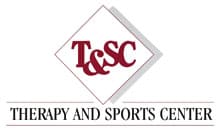Physical Training For Football Players
You had a great football season last year; your first on the varsity squad. But the coach is riding you hard this preseason to get in better football shape. He wants you to really drive off your legs and hit that hole in the line hard!
That sounds great to you, too, but you've been working out almost every day. You smile in the mirror and the mirror smiles back. Better football shape? It looks like you need to find out what that means. What is 'Better Football Shape?'
Football Training and Explosive Power
The answer is simple: Explosive Power is a combination of strength and speed. It is football physical training 101. And the football player who trains for explosive power will be the starter now and for years to come. Since it is so critical to your game, let's look at what you're doing wrong and what you can do to get out of the coach's doghouse.
There's nothing wrong with lifting and strength training. Those are great tools that you'll need to succeed in football. But there's more. You're lifting and getting stronger, able to bench press 280 now. But what if I told you that you don't have the power of a guy who only benches 240? Well, it's true in this case. Because that guy benching 240 is also working on speed, agility, and footwork. Something called interval training.
Football Interval Training
Most football players don't run great distances, usually fifteen to twenty yards at a time. And linemen even less. Football requires a different kind of training from other sports like basketball or soccer. Those have a great need for stamina, often running non-stop. But football physical training is different. Here's a quick list of exercises for you to get your body in football shape. [3]
- Squats: These leg strengthening exercises will get your legs strong enough to handle the acceleration techniques you'll need for speed. Squats can be done with or without weights.
- Leg Bench Press: Slowly add weight as you train.
- Glute Bridge: This exercise may seem simple, but try it with a loaded barbell and feel the hamstrings burn.
- Interval Sprints: Try running short distances quickly, stopping, and then starting again. Repeat as you develop.
- Running Cones: Set up a series of cones and run through them, alternately from side to side. This helps your coordination. You don't want to be that back running into the line, unable to make the moves to avoid the tackle.
- Backward Running: Sounds messed up, right? But it works and is especially helpful if you are playing corner. Trust me. Your hamstrings will thank you for it.
Running Mechanics
It's important for your safety that you train correctly. The running a football player needs is different from running cross-country. Here are a few tips:
- Drive off the balls of your feet with your body leaning forward.
- Push off from the ground like you are about to jump. (Make a mental note to listen to more Van Halen.)
- Pump your arms, keeping your head still, and squared to your shoulders.
But once you reach about fifteen yards, let up on the arms pumping and feet pushing into the ground. Instead, take longer strides. But keep your head still, especially if you are a receiver on a 'go-route.' This will get you from that quick acceleration off the line to your top-speed.
Football Physical Therapy
Proper technique and training will help you avoid those unnecessary injuries. Still, tackle football takes a toll on the human body, so accepting injuries is part of playing the game you love. But not all football injuries require major surgery. Sure, some do–like a torn knee ligament–but many can be healed with physical therapy. Here are a few injuries, including what your physical therapist might use to heal you. Please contact us today!
Football Knee Injuries
- Exercises are designed to strengthen the leg muscles and improve range of motion.
- Balance exercises.
- Hands-on treatment.
- Ice and vasopneumatic pressure to reduce swelling and pain.
Vasopneumatic devices are powered by compression. An inflatable garment with multiple pressure compartments is wrapped around the damaged body section, and an electrical pneumatic pump inflates and deflates the section with various cycle times and pressure.
Shoulder Injuries
- Exercises to improve motion and stop repetitive injury.
- Use of a sling.
- Biomechanical exercises.
Concussions
- Diagnosing a concussion through a detailed examination.
- Exercises for balance, vision, and inner ear to help restore normal brain function.
- Following a set protocol with your physical therapist until fully healed.
Overuse Injuries–Lower Back
- Pain relieving techniques, such as ice.
- Proper stretching exercises and strengthening the core muscles.
- Hands-on therapy.
- Education to avoid recurring injury.
Final Thoughts for the Season
Like college and NFL players, you should keep lifting to maintain upper body strength. But with the addition of interval training, you'll make those explosive plays that keep football the most popular sport in America.
Football physical training is unlike some sports that require running great distances or for an extended period of time. Short bursts of power plus speed are what will get you noticed. And when injuries arise, don't panic. Football physical therapy works and is often a great alternative to surgical procedures.
Sports Therapy Locations and Services
Luckily, our offices have a wide range of certified specialists, so it is easy for you to find the best therapist for your particular needs. To learn more about our highly-qualified staff of sports medicine and physical therapists, or to schedule an appointment, contact us today!
We have four locations you can choose from:
